Cottagecore (also known as Farmcore and Countrycore) is a cultural movement drawing inspiration from the rural lifestyle and the local artisans’ skills and crafts, rising fast on social media. The suffix “core” derives from 1980s hardcore punk music and is used nowadays to delineate a type of genre or category.
Early mentions of Cottagecore term appeared in 2017 on Instagram and Tumbler. Bucolic scenery (rural, countryside, or country life) that had proliferated these social media platforms over the last five years were christened with a name.
However, Cottagecore reached global recognition in 2019, thanks to influencers promoting the lifestyle on TikTok. Nowadays, cottagecore is everywhere on social media, from Instagram to Pinterest.
Think rare countryside scenery, nostalgic peasant dresses, rustic handmade crafts, and artisanal creations in fashion and homeware. You may have even partaken in some Cottagecore activities without even realising it, by wearing dresses with ruffles and floral prints or by finding refuge in a rural setting, from time to time.
In this article
What is Cottagecore?
Why Cottagecore is so popular right now?
What are Cottagecore aesthetics?
– Cottagecore subgenres
– Similar aesthetics to cottagecore
What is Cottagecore fashion?
– Best Cottagecore fashion brands
This article is the ultimate guide to the Cottagecore movement, its construct, aesthetics, and fashion. First, I will explain what Cottagecore is and why it has become so popular right now, in 2021. Then, I will introduce to you the most popular Cottagecore aesthetics and how to achieve them.
Finally, I will share the trendiest Cottagecore fashion styles and the top fashion brands and shops.
What is Cottagecore?
According to the urban dictionary, Cottagecore (also known as Farmcore and Countrycore) is an aesthetic and fashion style inspired by romanticised interpretations of rural and farm lifestyles.
However, Cottagecore is more than just an aesthetic as, beyond styles and dress, Cottagecore taps into other rustic and rural concepts such as the existence of witches or fairies.
Overall, the concept of Cottagecore is centered around ideas of a simple life in harmony with nature.
“As a concept, Cottagecore embodies the idea of a simpler and sustainable lifestyle that is in harmony with nature. Aesthetically, it’s a nod to the traditional English countryside style, romantic and nostalgic,” says Davina Ogilvie.
The activities and aesthetics that Cottagecore embraces are wide-ranging and complex, covering everything from fashion to gardening, cooking to frolicking, so too are its origins.
Cottagecore is, in part, a reaction against the capitalist-consumerist society and an increasing time spent in front of a computer screen, but also related to raising interests in sustainability and wellness. In the Cottagecore universe, no phones are pinging non-stop with messages and updates, as it attempts to assuage burnout with a passive enjoyment of life’s mundane tasks.
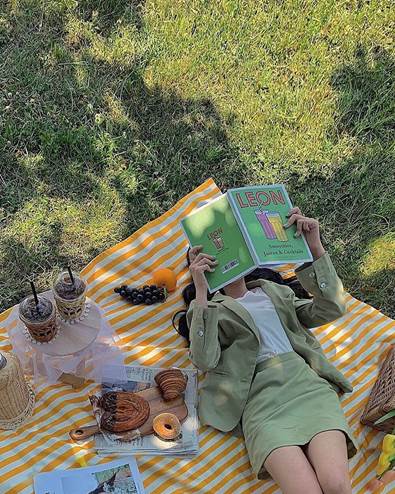
There are no urgent work emails or evenings spent responding to the demands of a tyrannical boss. There is no labour beyond a domestic village life’s simple daily task, where workaday tasks are completed with a sense of fulfillment.
Simply put, the concept of Cottagecore reflects the desire to live a quiet and straightforward life, away from technology, big city streets, and other modern types of stress-inducing activities.
However, most cottagecore people experience this movement/subculture mainly through images and videos on their computers and smartphones. This fact reveals another wrinkle in the central purpose of the Cottagecore movement: “The concept is less about achieving a simple, rural lifestyle and more about longing for it.”
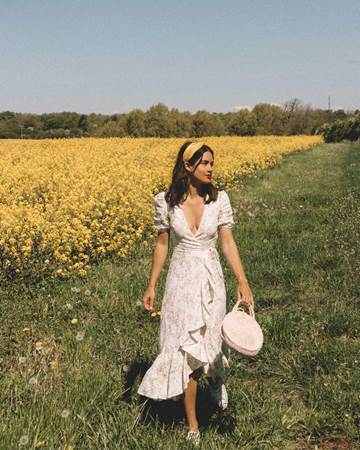
Courtesy: Sarah Christine
It is about the yearning that maybe things would feel different if we went back to our roots or looked a little bit like in our parents’ times.
Cottagecore becomes less dreamy when you consider the realities of living a life alone in the woods. “That idyllic image of English countryside is what makes so many people desperate to buy second homes there,” explains Quinn, the director of the Chichester fairy tale centre.
However, most Cottagecore lovers ignore that rural areas have plenty of problems, such as floods, no internet, no roads, or even electricity.
“Seeing Taylor Swift wearing a chunky Irish knit on the cover of her album made most people dream about living on the remote parts of the island,” he adds.
“But, while these rural settings make you want to live there, often, once you get there and the reality of no electricity, no water, no internet kicks in, you want to leave fast.”
Cottagecore deals with a complex concept; a place that’s real and inescapable for some while desired and unattainable by others. But that’s what’s so wonderful about digital subcultures, though.
“Cottagecore is about cosiness at home,” says Molly Hatch, and she’s right. Nothing stops you live a Cottagecore lifestyle from the comfort of your modern apartment in London or New York.
You can always make a cup of tea with honey, stare at pictures of meadows, castles, and windmills. You can dress up Cottagecore, tend the plants in your garden, and even mail a handwritten letter to a friend. Above all, you can do them all, from the comfort of your sofa.
Why Cottagecore Is So Popular Right Now?
Seen through that lens, Cottagecore is just one of the dozens of iterations of movements fetishising the countryside and cosiness over the past few hundred years. However, it is a movement that exists almost exclusively online via smartphone from cluttered apartments or suburban bedrooms.
Right now, Cottagecore lifestyle and aesthetic are everywhere.
You see it on Instagram, TikTok, Tumblr and beyond, and even on New York Times – when, at the beginning of this year, they published a great piece about Cottagecore, calling it “a budding aesthetic movement.”
So, what made Cottagecore so popular right now, in 2021?
1. The lockdowns
When the pandemic hit and quarantine became commonplace globally, people turned to find fulfillment and purpose outside the monetary and economic drive. People started to look at how the world would be without technology, without big cities, pollution, and wasteful fast fashion giants.
It is how Cottagecore, Dark Academia, Light Academia, and other similar movements started to gain traction as perfect vehicles of that simple, rural lifestyle. Suddenly, with so much free time spent at home, people began baking, gardening, and dressing simple once again.
Think focaccia laced with herbs, colourful vegetables, planning summer gardens in the backyard, and engaging in grandma-inspired fashion projects like knitting and embroidery. In no time at all, Cottagecore became the standout aesthetic of 2020-2021. for the same reason that everything else happened in 2020.
When the pandemic hit, idle homemaking became less escapism and more like an inescapable reality. Under lockdown, Cottagecore became a way to spin the terror and struggle into something adorable, directly correlated to how bad it was the outside world.
“Every time there’s been a spike in cases, there’s a spike in Cottagecore right along with it,” says Amanda Brennan, a trend expert at Tumblr. From early March to early April, the cottagecore hashtag jumped 153 per cent, while likes on cottagecore posts were up 541 per cent.
As seasons changed, so did the content:
In April simple at-home or farm-like activities such as cooking and embroidery were popular. In June and July, it was all about sunny wildflower fields, twee picnics, and lily pads.
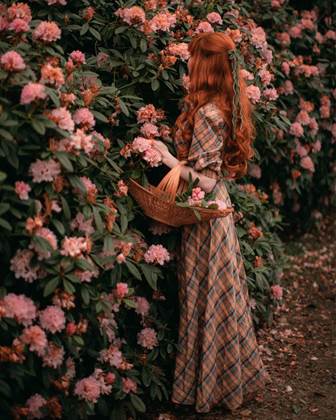
Courtesy: A Clothes Horse
The Cottagecore sentiments are “wistful and longing,” says Brennan, commenting on cottagecore Tumblr posts. “Like, ‘Oh if only I could have this’…”
2. Sustainability movement
There is an environmental side to the cottagecore, as well. Many cottagecore adherents praise the virtues of second-hand shopping, thrifting, growing vegetables, and cooking food at home.
They’re also proponents of the sustainable fashion movement, ethical manufacturing, and all cute and handmade things. In many ways, cottagecore exist as a subculture devoted to a slower and more thoughtful life.
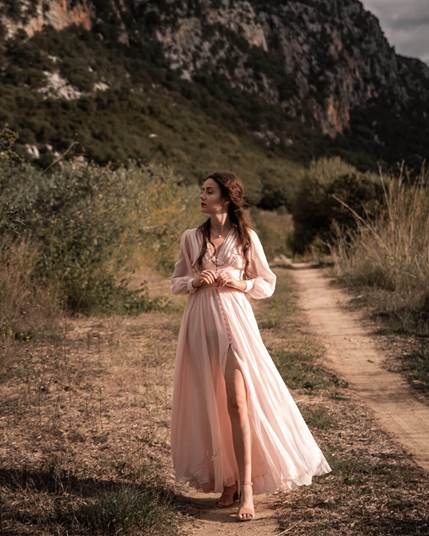
Courtesy: Bedra Vintage
Even before quarantine, brands had started using the aesthetics of cosiness in advertisements, supposed to make us feel safe and warm. Capitalism, of course, always finds a way to commercialise the moment.
In that sense, ‘having fun’ no longer means a night out with friends but a $90 cottagecore blanket, a vegan leather handbag, or a boho dress.
In times defined by anxiety, it’s not surprising that so many recent cultural movements revolve around self-soothing: weighted blankets, ASMR, slime, organic skincare, Animal crossings, fancy mattresses, food-making videos, and more. For example, after Taylor Swift released Folklore record whose official merchandise includes a rustic cardigan, #cottagecore spiked on social media the same day.
“Right now, the biggest trend in interior design is bringing the outdoors indoors. In these times of lockdown, people want to feel closer to nature,” said Kai Chow, creative director at the Doneger Group, a design consulting agency in New York City.
3. LGBTQ and justice movements
Cottagecore movement is different from other nostalgia-based subcultures by its open association to queer people and progressive politics. And, all over the internet, mini signifiers are showcasing these connections. For example, “cottagecore lesbian” is a popular identifier online right now.
Goblincore, another favourite among nonbinary people, is in a world where frogs are also, canonically, lesbians. Then, there’s the clothing aspect of cottagecore, important to those who do not conform to gender stereotypes in fashion.
Evienne Yanney, a 16-year-old in California, says that she discovered cottagecore on Instagram during a period where she wasn’t sure if she liked the way she dressed. As a lesbian who feels the world isn’t accepting her for who she is, she thought the idea of running away to a cottage was “soothing.”
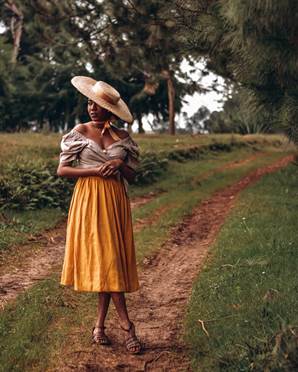
Courtesy: Linen Naive
Many Cottagecore accounts on social media have ‘Black Lives Matter’ or similar social justice slogans on their profiles. “Unlike other reactionary movements such as ‘Trad Wives’ — a right-wing mommy bloggers subculture who advocates a return to regressive gender roles — Cottagecore offers a vision of domestic bliss without servitude in the traditional binary framework,” explains Isabel Slone in the New York Times.
Many cottagecore followers express dissatisfaction with the roles and expectations placed on them in a heteronormative society. The bulk of the cottagecore community rejects heteronormative gender roles and seeks to remove traditional life stigma and stereotypes from past aesthetics and culture.
For this reason, cottagecore enjoys niche popularity within the LGBTQ community, particularly among lesbian and bisexual women. In their views, cottagecore is a movement where people are free to express queerness in a rural space, contrasting the homo/transphobia many who reside in existing small towns face.
4. Political debates
While the cottagecore aesthetic is not an organised political movement with stated goals or leaders, much of the conversation around cottagecore is political. Most people involved in cottagecore identify with an ideology that advocates for the restructuring of society.
The opposition to modern life is shared among Cottagecore adherents, regardless of their political spectrum. Despite many Cottagecore proponents having a relaxed outlook on life, the movement is criticised for so many things it stands for.
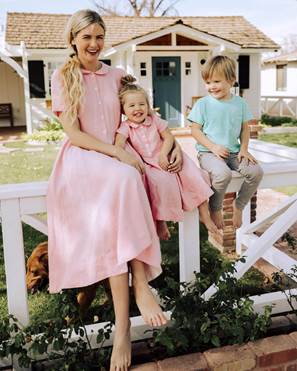
Courtesy: Tumblr
Indirectly, the cottagecore movement is associated with two directly opposed political groups. These groups have radically different outlooks on life, despite the shared frustration with modernity.
For once, the LGBTQ community sees cottagecore as a movement that allows people to express queerness in a rural space, contrasting the homo/transphobia many who reside in existing small towns face.
At the opposite pole is the progressive Cottagecore community proclaiming opposition to modernity based on a loss of conservative values and fondness for a pre-capitalist economic system. For example, TradWife subculture members often utilise cottagecore imagery, fashion, memes, and similar aesthetics to promote their views.
The group supports the revitalisation of traditional heteronormative gender roles for women, a popular aspect of far-right ideology. Cottagecore imagery is also used by the Eco-Fascist and Eco-Nationalist circles that uphold western colonialist and eurocentric views.
As such, cottagecore gets a lot of heat for promoting and romanticising the idea of farming life as a celebration of colonial aesthetics, especially in the context of North American and Australian social constructs.
What are Cottagecore aesthetics?
So what exactly embodies the cottagecore aesthetic? Some say that the Cottagecore aesthetic is influenced by fairy tales: fantasy, speculative fiction, fascination with tiny animals, etc.
But, if we look at early 19th century stories such as Beauty and the Beast, Little Red Riding Hood, and Cinderella, we see them filled with grotesquery, body horror, rape, and cannibalism scenes. Most of these stories were often taking place in scary forests and cottages that were death traps.
It wasn’t until later in the century that these stories were modified to appeal to children during the rise of romanticism. Thus, it is Romanticism, not fairy tales, that construct and influence the cottagecore aesthetic.
Cottagecore is a recall of the medieval era, an idealisation of nature and a nostalgia for someone else’s past. Add in a healthy dose of historical inspiration from old-time farming (think Laura Ingalls Wilder books) and some of your grandma’s vintage dishware, and you’re well on your way.
The traditional Cottagecore aesthetics refer to a white colonial era of European village aesthetics. It evokes images of slim white women holding wicker baskets filled with apples, farm eggs, and linen towels wrapped around freshly baked bread.
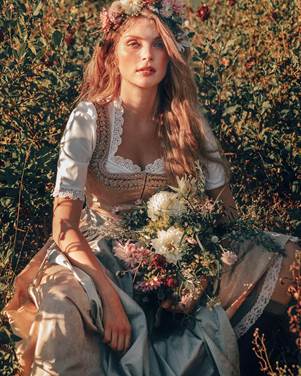
Courtesy: Lena Hoschek
It triggers an overly nostalgic yearning for bygone times of simplicity, free from technology and stress. The vital aesthetic components of cottagecore style are decorative cottage elements such as …
fresh and dried flowers
houseplants, handmade crafts
freshly picked fruits
homemade bread
traditional outfits
… all in a natural colour palette of neutrals and warm tones.
Cottagecore aesthetic also contains elements of Light Academia and Mori Fashion. Imagine doilies, DIY fairy spoons crafted from seashells, eyelet blouses, soft cardigans and hair ribbons, illustrations from Frog and Toad, and stills from Miyazaki movies.
However, it is pretty challenging to point out someone on the street and label them as “Cottagecore” as we can with emo or punk-style followers.
1) Bloomcore
Bloomcore is an aesthetic similar to Cottagecore in many ways but with a centralised focus on flowers and gardening in a small, quaint village.
2) Honeycore
Honeycore is an aesthetic based around the rural production and consumption of honey, bread, and waffles. It is similar to Cottagecore in that agricultural imagery and values are emphasised, but the visuals are streamlined to create a colour palette of primarily pale yellows and browns.
When analysing the Honeycore aesthetic in fashion, we often see bees, honey, and summer field-flowers to emphasise organic agriculture and conservation of bees.
3) Vaporcottage
Vaporcottage is a fake aesthetic made up on the Aesthetics Wiki Discord started as a joke by mixing the grounded and realistic escapism of Cottagecore with surrealist, sarcastic, and even dystopian nightmare imagery belonging to the Vaporwave culture.
The aim was to prove that any aesthetics can be blended in an exercise later described as: “mixing these styles is you see after ingesting soup laced with psychedelics.”
4) Southwest Cottagecore
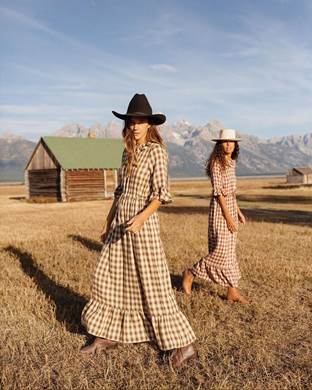
Courtesy: @christydawn
Southwest Cottagecore moves away from the village, foresty, and green colour palette of cottagecore. The main aspects are pretty identical, but instead of stone cottages, you may find a house framed by yuccas.
The southwest cottagecore fashion is more suited for warm weather, paired with warm colours and the occasional beachy, whimsical look. Run-down shacks comprise the beachside of this style on the coast and beachgrass.
Lizards, rabbits, snakes, and hawks are characteristic of this aesthetic.
5) Dark Cottagecore
Dark cottagecore is a darker take on the Cottagecore aesthetic, infused with dark academia elements. The dark cottagecore style focuses on the negative (dark) aspects of the cottage lifestyle that the Cottagecore often tries to veer away from.
Similar aesthetics to Cottagecore
Cottagecore is often compared to aesthetics such as Grandparentcore and Grandmacore, which seek to invoke a similar sense of nostalgia. It is also similar to Light Academia, Naturecore, and Warmcore aesthetics.
Cottagecore is also related to Faeriecore, Farmcore, Goblincore, and other nostalgia-ridden aesthetic communities. These cores have in common the desire to live in a world outside the one currently inhabited.
These ‘cores,’ including the cottagecore, are just a few of an ever-expanding universe of hyper-specific aesthetics proliferating online.
There is…
Meadowcore (cottagecore but just the meadows)
Frogcore (cottagecore but just the frogs)
Goblincore (cottagecore but with mud and foraged mushrooms and gender-neutral clothing)
… and dozens of others even the most online young people have probably never heard of.
Cottagecore Fashion
Cottagecore fashion visuals and aesthetics often include cross-stitch, embroideries, and even prints of fairies, flowers, crowns, gardens, farms, forests, animals, handwritten letters, vintage pottery, poetry, cottages, and farmhouses, open fields, old books, outdoors, and even tea sets.
While gorgeous and inspiring, most cottagecore clothes and outfits are impractical for the type of farming or gardening work that the aesthetic revolves around. Nevertheless, some of the most common cottagecore clothing elements are loose-fitting, flowy, and floaty dresses and skirts, often reminiscent (not always) of housework wear from the 1900s and 50s.
Oversized layered clothing (as stated above) with big pockets, puffy sleeves, and button blouses are also popular.
Think sundresses and overalls …
… naturally occurring colours such as brown, baby pink, olive green, ivory, maroon, beige, ochre …
… mixed with dusty, faded rose-pink, light yellow, and baby blue.
Imagine village patterns such as stripes, paisley, faded floral, and gingham found in embroidery, plants, animals, and insects. Also, lots of hand-crafted accessories, simple jewellery, knitted hats, socks, and outerwear.
Where to buy Cottagecore fashion
Here are some of the best stores to buy cottagecore clothes right now. From Shein – which sells some of the most affordable cottagecore clothing – to Etsy, a low-key store to source unique cottagecore clothing.
Moreover, the clothing brands I’ve selected for you below offer hand-made and authentic cottagecore clothing, for any budget and any taste. Without further ado, these are the best shops for cottagecore aesthetic right now, in 2021.
Adored Vintage
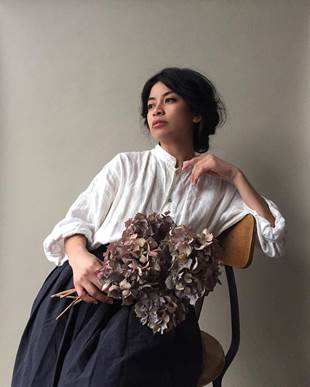
Adored Vintage is a women’s clothing boutique and retail shop based in Portland, Oregon for modern romantics with a penchant for timeless and feminine threads and wares that evoke bygone eras.
Amantine
Amantine Boutique is a woman-owned and operated company devoted to curating affordable, beautiful, and unique clothing and accessories for the discerning eye. Our inspiration is drawn from the timeless and effortless style of French fashion, with a focus on the romantic and feminine.
ETSY
Etsy is the global marketplace for unique and creative goods. It’s home to a universe of special, extraordinary items, from unique handcrafted pieces to vintage treasures. Here you can find unique cottagecore fashion pieces, from clothing to jewellery and decorations.
Reformation
Reformation began by selling vintage clothing out of a small Los Angeles storefront in 2009. The label makes effortless silhouettes that celebrate the feminine figure and pioneers sustainable practices, focusing on people and progress each step of the way.
Bedra Vintage
Bedra Vintage is inspired by the cuts and designs of past decades to create clothes that bring the past back to life and preserve the memory of fashion heritage. The context in which they occur is changing, but not the form.
Breath Of Youth
Breath of Youth has instilled romantics and free spirits from all over the world with a sense of confidence and freedom. The label carefully curates clothing and accessories to inspire the hopeless romantics and dreamers to seize the day and fall in love, day after day.
Christy Dawn
Christy Dawn is committed to practices that honour Mother Earth and all her people. The label aims to live and work in harmony with nature, so that all may benefit. Its practices and products inspire others to remember and celebrate their innate connection with one another, and with the natural world.
Dôen
Dôen began in 2015 inspired by vintage designs and nostalgia for the California of past decades, and by the shared desire to make elevated yet wearable pieces for the everyday.
Free People
Free People is designed for a 26-year-old girl, smart, creative, confident, and comfortable in all aspects of her being, free and adventurous, sweet to tough to tomboy to romantic.
Faithful The Brand
Faithful the Brand pieces are designed with the modern traveller in mind. They are versatile and easy – allowing her to feel confident and stylish in the most effortless and attainable way possible.
Forest Girl Clothing
Forest Girl Clothing is the home of Forest Fashion: natural fabrics, muted colours, layers, soft textures, and comfort fits. In its collection, you’ll find mostly colours and patterns reminiscent of nature.
Linennaive
Linennaive palette for the beginning of its collections is inspired by our daily drink – a cup of Flat White Coffee – steamed milk colour with small, fine bubbles and glossy or velvety consistency.
Roam Vintage
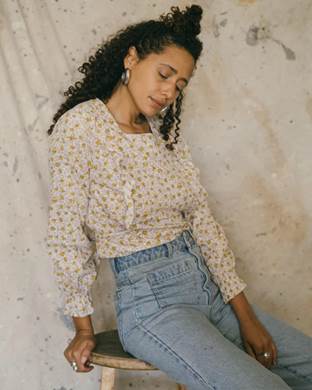
Roam Vintage was born out of endless love of the hunt for beautiful things with history. Each item is hand-picked with the intention for you to bring new life into pieces with a story all their own.
Conclusion
Like any style or movement, cottagecore is a living, as a breathing thing constantly evolving and changing. So where does it look like cottagecore is headed?
Well, one thing is for sure: It’s not going anywhere, so long as the pandemic keeps many of us at home.
Some think that cottagecore will keep its “warm and fuzzy” vibe, embracing the historic and romantic, especially now with the holidays coming up and the tendency to recall childhood and family memories.
Others argue that it could blend and turn it into a more contemporary style by mixing it with “the clean lines” and neutral tones of the minimalist decor.
Only time will tell if the cottagecore style catches ground in fashion, to the point of being equally recognised and appreciated, like dark academia styles or even streetwear fashion.
This article has not been edited by Fibre2Fashion staff and is re-published with permission from thevou.com



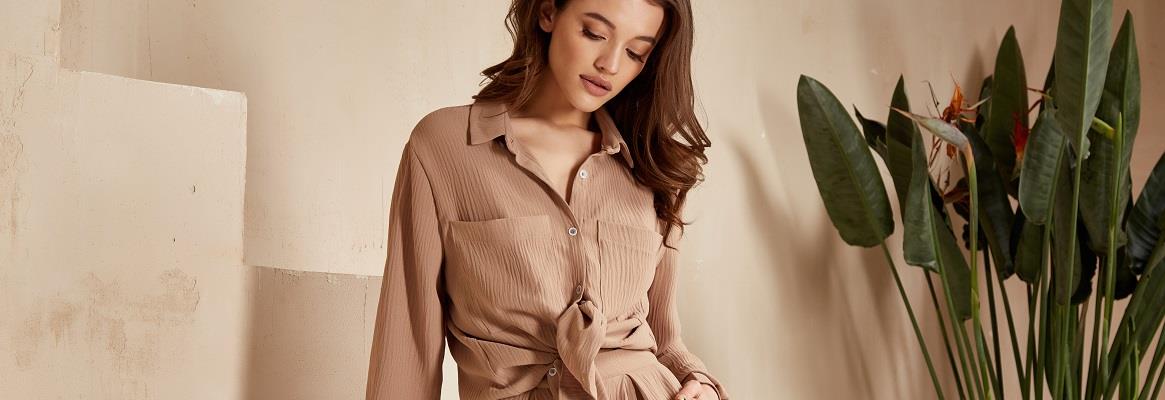




Comments